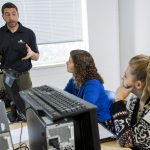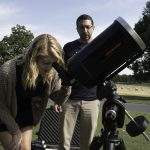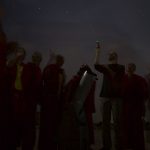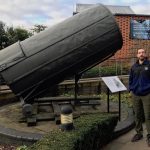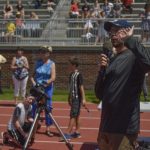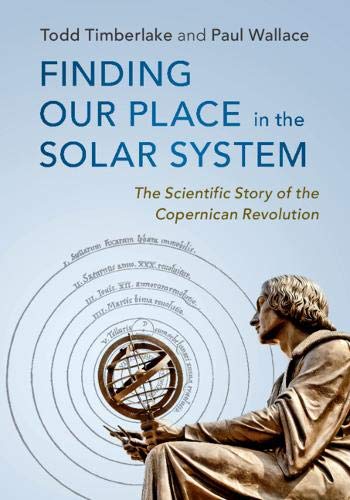
Dr. Todd K. Timberlake
Professor of Physics and Astronomy
Director, Pew Observatory
Berry College
Books
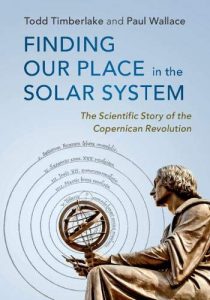 Finding our Place in the Solar System gives a detailed account of how the Earth was displaced from its traditional position at the center of the universe to be recognized as one of several planets orbiting the Sun under the influence of a universal gravitational force. The transition from the ancient geocentric worldview to a modern understanding of planetary motion, often called the Copernican Revolution, is one of the great intellectual achievements of humankind. This book provides a deep yet accessible explanation of the scientific disputes over our place in the solar system and the work of the great scientists who helped settle them. Readers will come away knowing not just that the Earth orbits the Sun, but why we believe that it does so. The Copernican Revolution also provides an excellent case study of what science is and how it works. Published by Cambridge University Press in 2019. Click the image to purchase this book from Amazon, or use the Teaching menu above to find resources for teaching with this book.
Finding our Place in the Solar System gives a detailed account of how the Earth was displaced from its traditional position at the center of the universe to be recognized as one of several planets orbiting the Sun under the influence of a universal gravitational force. The transition from the ancient geocentric worldview to a modern understanding of planetary motion, often called the Copernican Revolution, is one of the great intellectual achievements of humankind. This book provides a deep yet accessible explanation of the scientific disputes over our place in the solar system and the work of the great scientists who helped settle them. Readers will come away knowing not just that the Earth orbits the Sun, but why we believe that it does so. The Copernican Revolution also provides an excellent case study of what science is and how it works. Published by Cambridge University Press in 2019. Click the image to purchase this book from Amazon, or use the Teaching menu above to find resources for teaching with this book.
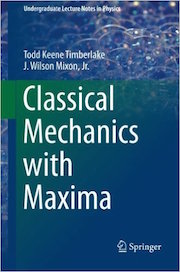 Classical Mechanics with Maxima guides undergraduate students in the use of Maxima―a computer algebra system―in solving problems in classical mechanics. It functions well as a supplement to a typical classical mechanics textbook. When it comes to problems that are too difficult to solve by hand, computer algebra systems that can perform symbolic mathematical manipulations are a valuable tool. Maxima is particularly attractive in that it is open-source, multiple-platform software that students can download and install free of charge. Lessons learned and capabilities developed using Maxima are easily transferred to other, proprietary software. Published by Springer in 2015. Click the image to purchase this book from Amazon, or use the Teaching menu above to find resources for teaching with this book.
Classical Mechanics with Maxima guides undergraduate students in the use of Maxima―a computer algebra system―in solving problems in classical mechanics. It functions well as a supplement to a typical classical mechanics textbook. When it comes to problems that are too difficult to solve by hand, computer algebra systems that can perform symbolic mathematical manipulations are a valuable tool. Maxima is particularly attractive in that it is open-source, multiple-platform software that students can download and install free of charge. Lessons learned and capabilities developed using Maxima are easily transferred to other, proprietary software. Published by Springer in 2015. Click the image to purchase this book from Amazon, or use the Teaching menu above to find resources for teaching with this book.
Teaching
I teach a variety of courses including historical astronomy courses for non-science majors, introductory physics courses for life science majors, computational physics for physics and engineering students, and occasionally upper level physics courses like classical mechanics and quantum mechanics, as well as an Honors course on extraterrestrial life. My strongest teaching interests are using computers to teach physics and astronomy, and using the history of science to teach science to non-majors. I am a member of the Open Source Physics collaboration which was recently awarded the American Physical Society’s Award for Excellence in Physics Education and I have won several teaching awards from Berry College. For more information about my teaching, please follow the links in the TEACHING menu above.
Research and Writing
My research specialty is computational quantum mechanics. I study properties of simple one-dimensional quantum systems and explore connections between these properties and the dynamics of the classical version of the same system (an area of research sometimes called “quantum chaos”). For more information about my research, please follow the links in the RESEARCH menu above. I also engage in the scholarship of teaching as well as writing and speaking about the history of science for the general public.
Contact Information
- Address: Berry College, PO Box 5004, Mount Berry, GA 30149-5004
- Office: SCI 338A
- Office Phone: (706) 368-5622
- Email: ttimberlake@berry.edu
- FAX: (706) 238-7855
Professional Information
- Curriculum Vita
- Tenure Dossier Materials (from 2007)
- Promotion Dossier Materials (from 2013)

